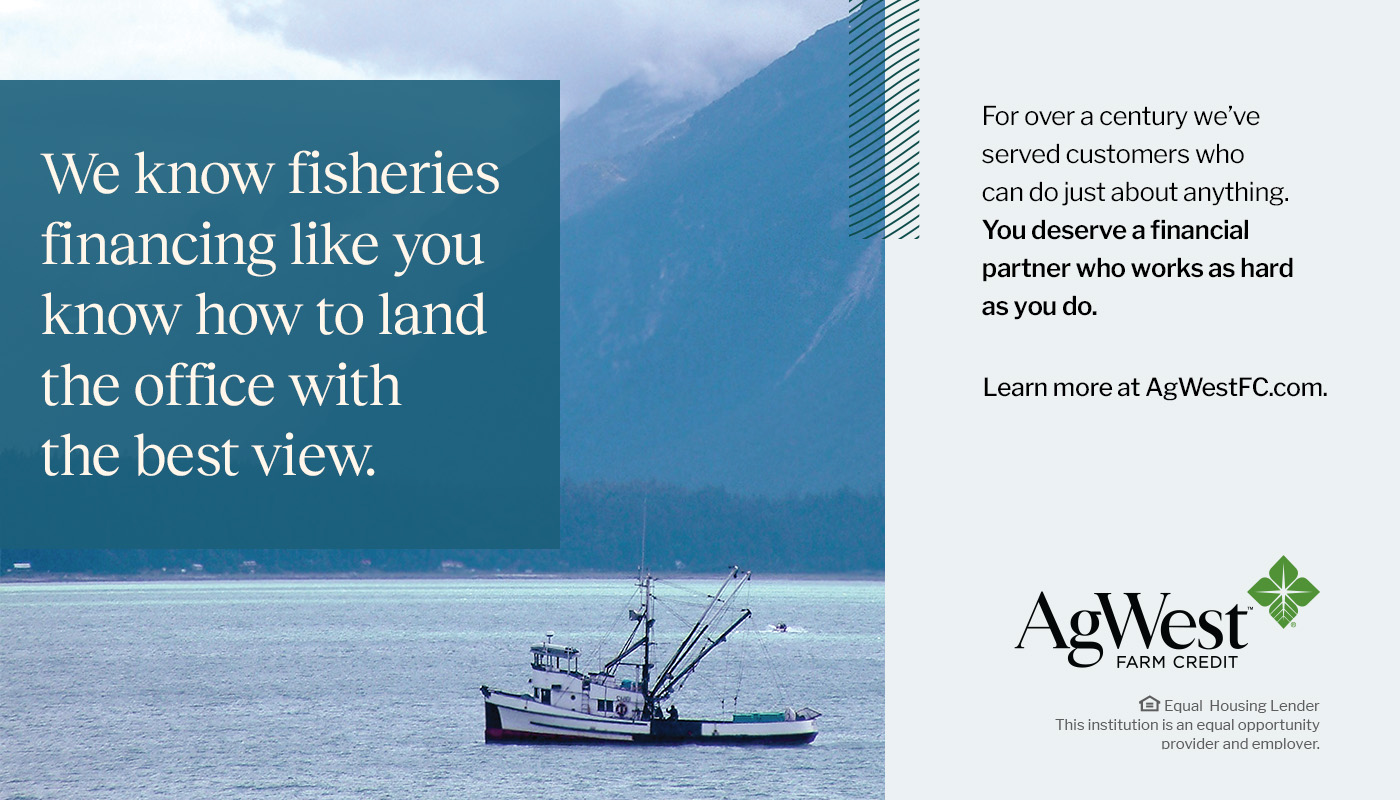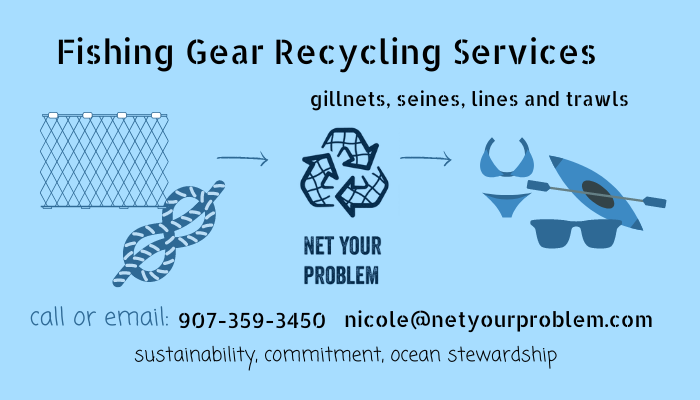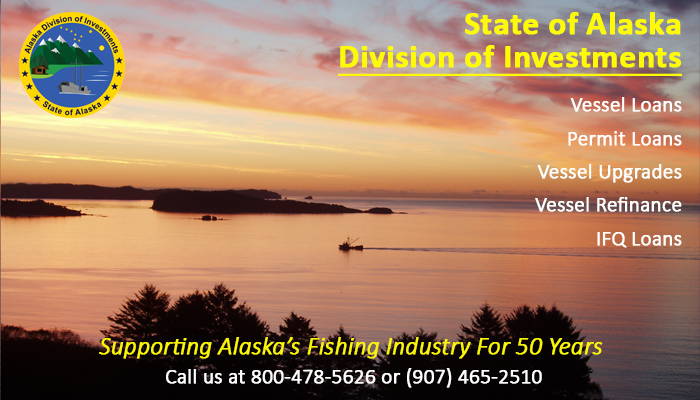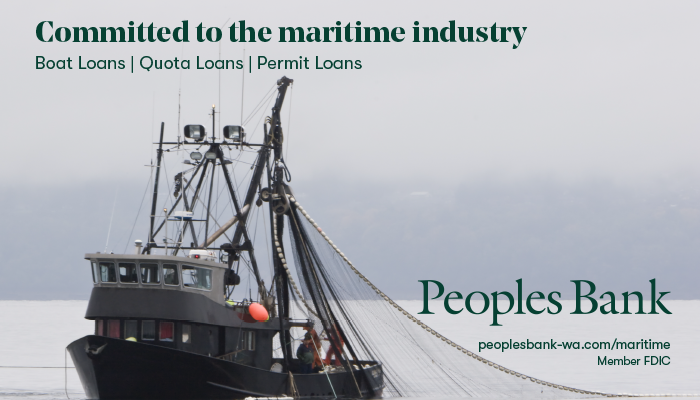Fish Factor by Laine Welch
January 12, 2021
Is it a coincidence that one of the world’s largest mineral deposits is located near the world’s largest sockeye salmon spawning grounds at Bristol Bay? And if the likes of a Pebble Mine removed the bulk of those deep deposits that also create the world’s magnetic field, could it disrupt the salmons ability to find their way home?
A study, funded by Arron Kallenberg of Homer, founder/CEO of Wild Alaskan Company and a third generation Bristol Bay fisherman, aims to find out.
“It's not even been 10 years since we've discovered that salmon, sea turtles and other marine species are using the Earth's magnetic field as a way to know where they are and to make important navigation decisions. But what is the magnetic environment that they need to thrive, and what might humans be doing that might keep them from thriving,” said Dr. Nathan Putman, a senior scientist at Texas-based LGL Ecological Research Associates and an expert on animals’ use of magnetics fields in migration who is leading the study.
The salmon at Bristol Bay are tuned into thousands of years of experience,” Putman said. “Might removing magnetic minerals alter the magnetic landscape they have experienced, and to what extent?” he asked.
The combinations of magnetic field strength and angles give the salmon a sense of where they are, he explained.
“For instance, if a fish has left its river and finds itself in a stronger magnetic field than when it departed, it's got a good chance of being further north of the river. And if it finds itself in a weaker magnetic field, it has a good chance of being further south. It can use that information to decide which way it should go, depending on whether it's heading out to its foraging grounds, or if it's matured and it's time to head back home.”
Putman’s earlier studies on pinks revealed that salmon have multi-purpose navigational tools.
“The handy thing about the magnetic field is that it’s both a compass and a map. A compass by itself only gives you a direction. The Earth's magnetic field gives you that direction, but for salmon it also gives a sense of where in the Bering Sea or the Gulf of Alaska they are. It’s sort of part compass, part GPS,” he explained.
Putman said it is easy to manipulate magnetic environments in the lab.
“We call them magnetic displacement experiments,” he said. “And they perform quite well. The salmon seem to know how to orient their movements when they grow up in a pristine magnetic rearing environment. But if you add something as simple as a nearby iron pipe, it distorts the field. Then you have the same family of fish, the same setup, the same sort of behavioral assays and they don't appear capable of using the magnetic field to make navigation decisions.”
For the Bristol Bay project Putman is using a high-resolution magnetic model for 304,000 latitude/longitude points over the past 20 years, looking at the impact of mining activity on fluctuations in local geomagnetic fields. By comparing the rate of change in the geomagnetic field near mining sites to baseline background variability, he can identify potential man-made impacts of mineral extraction on field variations.
“I think it really does put some burden back on us as humans to ask how we are altering the magnetic environment around salmon, whether it's from mineral extraction or electric cables running across or through streams. How might we be presenting salmon or other species with challenges from how we're manipulating their habitats. That's where we're going with this project.”
Dr. Putman’s results should be known by this summer when the sockeye run is returning to Bristol Bay.
Fishing facts - Want to know where most fishermen live in Alaska? Or where most Alaska fishing boats are home ported?
United Fishermen of Alaska has just released its updated Fishing Facts for every region of Alaska, plus the West Coast. The facts are updated through 2018, the most complete year available.
At a glance, they show that nearly 8,700 permit holders fished in 2018, or which 6,055 were Alaska residents. Over 21,341 crew licenses were purchased, split almost evenly between residents and non-residents.
Alaska’s seafood industry employed nearly 59,000 direct jobs, more than any other private sector. Over $172 million in fishing taxes were collected, of which $73 million went to state coffers and $51 million to local governments.
Homer is home to 615 fishing boats and nearly 20% of its population fishes, earning $69 million at the docks in 2018.
A total of 636 vessels call Kodiak Island home with 1,074 resident fishermen, or 17.3% of the population, who earned $105 million. Kodiak lays claim to 15 processing facilities, from ‘mom and pops’ to majors.
At Petersburg, nearly 24% of the population fishes for a living on 620 home-ported boats. Their income was pegged at $50.5 million.
Only 9 permit holders fished out of Dutch Harbor/Unalaska but its 8 big processing plants helped generate $8.2 million in fishery taxes, both to the region and the state.
Just over 6,000 Washington residents plus crew fished in Alaska in 2018. Of the total harvest of 5.7 billion pounds, 4 billion pounds was taken by Washington residents. Of the dockside value of $1.94 billion, Washingtonians pocketed $900 million.
The Fishing Facts include regional fishing, processing jobs and wages, fishery tax revenues and legislative districts.
Big fish moves – The 30 coastal communities that comprise the Coastal Villages Region Fund and the Bristol Bay Economic Development Corporation have bought out Seattle-based Mariner Companies that is majority-owned by Kevin Kaldestad and Gordon Kristjanson. The purchase comes with three percent of the Bering Sea snow crab and red king crab quota, along with seven crab vessels.
In a statement, the new company said it will sell the crab quota, valued at $35 million, to the communities in the Yukon-Kuskokwim Delta and Bristol Bay regions and provide economic support through fishing operations.
Also, Peter Pan Seafoods, announced it is now a US-owned, vertically integrated seafood processor. The company was owned since 1950 by Maruha Nichiro of Japan.
The new ownership group includes Rodger May of Northwest Fish Company, the Na’-Nuk Investment Fund managed by McKinley Capital, and the RRG Global Partners Fund.
New Peter Pan will continue to operate facilities in Dillingham, King Cove, Port Moller, and Valdez with headquarters in Bellevue, Wash.
Fish trade tips - Fishermen have until January 15 to apply for federal funds to take the sting out of market hits from trade tariffs.
The U.S. Dept. of Agriculture will distribute a total of $530 million to fishermen based on their catches in 2019 for 19 species under the Seafood Trade Relief Program (STRP).
Damages to fishermen are calculated as the difference with trade tariffs and the baseline without it. For cod, that adds up to an extra 14-cents a pound. Salmon fishermen get an extra 19 cents per pound.
Other Alaska species include Dungeness crab, king crab, snow crab and Tanners, geoduck clams, sablefish, herring, pollock, flounders, mackerel, perch and turbot.
Fisherman must fill out a 2020 Seafood Trade Relief Program (STRP) Application, found at www.farmers.gov and at USDA Farm Service Agencies. There are three Alaska agency locations at Homer, Kenai and Palmer.
Joint Fish and Game meeting on Covid questions - The Alaska Board of Fisheries and Board of Game will convene a web conference on January 19 to discuss current Covid conditions and its impacts on upcoming meetings.
Tentative topics include conducting some or all of the meetings via the web, or if meetings should be postponed until the 2021/22 meeting cycle and what the impacts might be.
This is a non-regulatory meeting and no testimony will be taken.
Written comments may be submitted through January 15; previously submitted comments will be included and need not be resubmitted. Comments can be entered online or emailed to [email protected]/
The meeting will be live streamed at the Joint Board’s website. Questions? Contact the Boards Support Section at (907) 465-4110.
But’s up - Halibut catch limits for 2021 will be revealed on January 29, the last day of the International Pacific Halibut Meetings that will convene virtually starting on the 25th .
A preliminary review of the 2020 fishery shows a total catch for the U.S. and British Columbia at 35.7 million pounds, down 11% from 2019.
Sixty-three percent was taken in commercial fisheries (22.3 million pounds). Alaska fishermen took nearly 16 million pounds, 7% below the catch limit.
Recreational fisheries took 17 percent (6 million pounds); 3 percent went to both subsistence and surveys/research (one million pounds each).
Over 5 million pounds of halibut was taken as bycatch in other fisheries.
Homer got the biggest chunk of the Pacific halibut landings at 18% (3 million pounds), followed by Dutch Harbor and Kodiak. Juneau at 1.3 million pounds narrowly outpaced Sitka for total commercial halibut landings.
Find more at www.alaskafishradio.com






